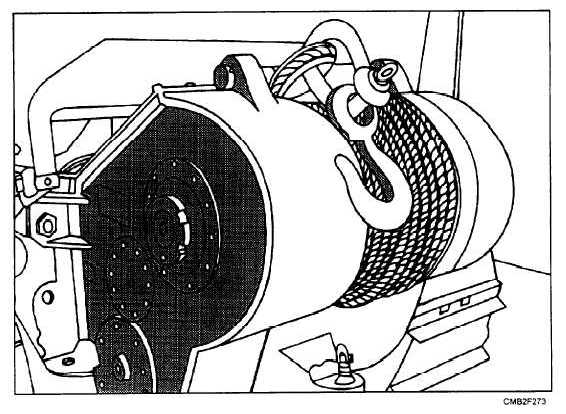The two brakes that provide control of the winch drum are as follows:
The WORM BRAKE SHAFT prevents the winch drum from rotating under load when the power takeoff is disengaged.
The SHIFTER BRACKET BRAKE prevents the drum from overrunning the cable when the cable is being unreeled.
Some winches may be equipped with an automatic level-winding device to spool the cable on the drum in tight, even coils, and layers. This prevents crushing of the cable due to loose, crossed coils and layers, and it allows off leads of the cable while maintaining level winding.
A broken shear pin usually causes faulty operation of winches. Internal damage of the winch can be caused by the use of a shear pin that has too high a breaking strength. Internal winch failure, resulting from overload, is commonly found to be sheared keys or a broken worm shaft. Often, when the cable is wound unevenly under tension, the winch housing will be cracked or broken. This will require replacement of the assembly.
NOTE
NEVER install a shear pin that in not of the proper shearing strength. Damage to the winch will occur when overloaded.
The winch that you will most likely encounter on construction equipment is the one attached to the rear of a crawler tractor, also known as a dozer. It is mounted on the rear of the dozer (fig. 6-32) and is directly geared to the rear power takeoff. This arrangement permits development of a line of pull that is 50 to 100 percent greater than straight dozer pull. The winch is used for uprooting trees and stumps, hoisting and skidding stress, freeing mired equipment, and support amphibious construction operations.
When performing maintenance on a winch, ensure that the gear case has the recommended amount and type of lubricant. Should disassemble of the winch be required for repairs, follow the procedures given in the manufacturer's manual.

Figure 6-32. - Winch attachment on a dozer.
Continue Reading